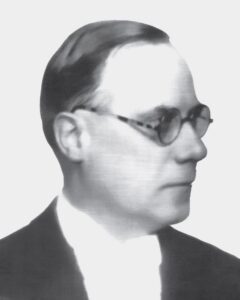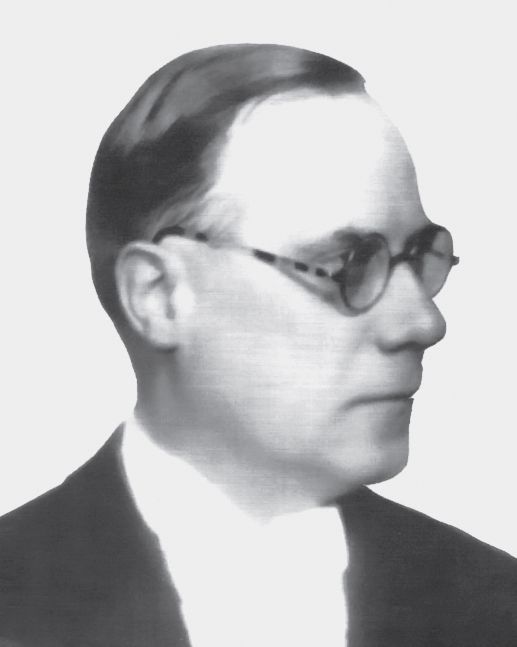Today, relations between the patriarchates of Moscow and Romania are tense: both lay claim to jurisdiction in the Republic of Moldova, which makes up about two-thirds of the historic region known as Bessarabia. The other third of Bessarabia is now in Ukraine, Budjak (Izmail and Bilhorod-Dnistrovskyi). In the Republic of Moldova, the Russian and Romanian patriarchates have had rival jurisdictions ever since the fall of the USSR, although things didn’t get really tense until very recently, when Russian-affiliated clergy began joining the Romanian jurisdiction (without canonical releases) as part of the fallout from the war in Ukraine.
The history of Bessarabia is messy. It begins with the fourteenth-century Principality of Moldavia, which encompassed historic Bessarabia (i.e., the modern Republic of Moldova plus that bit of Ukraine) as well as some other regions. It included a lot of Romania and had its capital in Suceava, then Iaşi. (It’s significant that when Romanians hear “Moldova” they immediately think of the northwestern part of their country, rather than the Republic of Moldova.) In time it became a vassal of the Ottoman Empire, which continued up to the Russo-Turkish War of 1806-1812. In the wake of this war, the eastern half of Moldavia was ceded to the Russian Empire and renamed “Bessarabia.”
This marks the first Orthodox jurisdictional change: up to 1812, the Orthodox Church in Moldavia was under the ultimate jurisdiction of the Ecumenical Patriarchate, but Russian rule meant that the church in Bessarabia was now subject to the Holy Synod of Russia. No canonical procedures were followed here, as far as I can tell; the change in civil government sort of automatically meant a change in ecclesiastical jurisdiction.
The next big change came after the Crimean War. Russia’s defeat resulted in, among other things, the loss of southern Bessarabia, which returned to Moldavian rule in 1856. The churches in this region were now, once again, governed by local hierarchs ultimately subject to Constantinople, after forty-two years under the Russian synod.
Eight years after this, in 1864, another change occurred: at the behest of the government, Orthodox Churches in the united Romanian principalities of Wallachia and Moldavia were declared autocephalous. The Ecumenical Patriarchate initially rejected this claim; it was only in 1885 that the EP relented and issued a tomos of autocephaly to the Romanian Orthodox Church. (You can read all about the history of Romanian autocephaly in my article on the subject.)
But Bessarabia wasn’t part of the Romanian Church when that EP tomos was issued, because, in 1878, Russia again took control of the region. This happened as part of a treaty following yet another Russo-Turkish war. The Romanian state consented to this transfer of territory — it was part of a deal that established international recognition for Romanian state independence — but again, I’m unaware of any official ecclesiastical transfer. In any case, now all of Bessarabia was once again under Russian rule, and the churches of Bessarabia were subordinate to the Russian Holy Synod. This was twenty-two years after Russia had lost these churches and fourteen years after the Romanian Church declared independence from the EP.
The next forty years saw no ecclesiastical shifts, but then the Russian Revolution happened. Leaders in Bessarabia declared themselves independent, proclaiming the “Moldavian Democratic Republic,” and then the Romanian army entered the region to restore order. Bessarabia was incorporated into the Romanian state — part of the post-World War I emergence of Greater Romania. Once again, the Orthodox churches in Bessarabia were under the ecclesiastical jurisdiction of the Romanian Orthodox Church.
Twenty-two years after that, in 1940, the Soviet government pressured Romania, under threat of war, into ceding Bessarabia to the USSR. The bulk of Bessarabia annexed by the USSR became the Soviet Socialist Republic of Moldova, with the rest incorporated into the Soviet Socialist Republic of Ukraine. Yet again, the church situation changed too, with the churches subordinated to the about-to-be-reconstituted Moscow Patriarchate. And this is how things remained for five decades, until 1990, when, as the Soviet Union collapsed, the Soviet republics started declaring independence.
While Ukraine became an independent country, its church retained its affiliation with the Moscow Patriarchate, being granted semi-autonomy. This is the Ukrainian Orthodox Church (UOC), which, following the Russian invasion of Ukraine in 2022, declared itself independent of the Moscow Patriarchate. Meanwhile, in the Republic of Moldova, the Moscow Patriarchate continued to exercise jurisdiction, but the Romanian Patriarchate also entered the picture, re-establishing its Metropolis of Bessarabia in 1990. Which brings us up to the present day, with two canonical church structures operating in Moldova.
So: 1812, 1856, 1864, 1878, 1918, 1940, 1990… The one constant for Orthodoxy in modern-day Moldova has been change.

In light of all this, I thought it might be insightful to revisit the last time Moldova changed hands, in 1940. The August 1940 issue of the Romanian Church periodical Biserica Indoliata published an article called “The Grieving Church” by Professor Ioan Savin of the theology faculty in Chisinau. Savin laments the loss of the Romanian Orthodox churches of Bessarabia to the Moscow Patriarchate, proclaiming, “We’ll withdraw, but we’ll be back.” An English translation of the full article is below. To download the Romanian original, click here.
***
The Grieving Church
3 JULY 1940 – A day of mourning and heartbreaking sadness for the Romanian nation and its ancestral Church. From the ancient patrimony of Romanianism, a patrimony barely restored through the heroic sacrifice of the eight hundred thousand soldiers, who fell on the battlefields or died on beds of cruel suffering, again are torn from us, through the most brutal violation of justice, bloodied strips of body and soul: the north of the princely Bukovina, and the whole of Bessarabia, with its millions of peaceful believers and native Moldavians. The Prut once again becomes the dividing border between the two Moldovas, one returned to its old, crippled borders, the other once again passed under the foreign rule of the great, vague and forever unsettled neighboring Russia. We thus returned to the conditions of 1918, conditions that we thought would never be reached again in a new Europe, created on justice and the free determination of the peoples.
Circumstances, however, wanted otherwise. Our beautiful dream seems to be destroyed, and with it, everything we have built, here, between the Prut and the Dniester, during almost a quarter of a century of Romanian work and faith. Along with the pain of the country, there is an even greater one, that of the Church. Because for her, the new brutality is even more unfriendly. Remained during the old invasion, since 1812, as a shield and hope of the Moldavian people, she is today the first and great victim. The places (of worship) that we erected here for the Lord, or those that we rebuilt and beautified, will fall as first victim of desecration and destruction, together with their servants, as many as they remained there, unable to take, in the calculated haste of the occupation, the way of wandering (refuge). What a strange and unexpected turn of fate!!
The Romanian Church, which for a moment comforted the thought of being here, on the Dniester, a point of watch and defense of Christianity in the fight against the unleashed forces of unbelief, is forced not only to defeat its dreams, but TO COUNT ITS DEAD, MARTYRS FOR THE FAITH.
With all its great pain, pain that almost overwhelms that of the Motherland with which it finds itself even more deeply fraternized in the difficult moments of trials, the Church is not in despair. She and the Country went through such hardships before. Some maybe even heavier, than the current one. And she overcame them. The same way we will overcome the current one as well. What the more than one hundred years of Russian or Austrian imperialist occupation could not perpetuate, either in Bukovina or in Bessarabia, neither will the temporary occupation of now. We stand in these parts of the East on the lasting foundations of our Latinity and Christianity, and we will not fall unless they also fall. But we will not fall. We may falter, but we will not break. We’ll withdraw, but we’ll be back. We will still suffer, but we will overcome. God holds and weaves the threads of history, on our behalf. Confident in Him, and in the destiny that He has given us in the book of History, we await the hour of justice and victory. Both we and our brothers forcefully separated from us will suffer but we will not despair: For we cannot despair of God’s justice and His victory in the world. Today’s suffering will strengthen us for tomorrow’s complete victory.
Let our brothers from Bukovina and Bessarabia not lose hope, both those who stayed near the homes and altars, as well as those who went wandering on the free land of mother Romania. The 22 years we were together were not really that vain. We defended them in 1918 from the devastating fury of the first revolutionary outbreaks, and we assured them during all this time of Romanian care, a corner of a fruitful Romanian and Christian life. The regime that is being installed now, after the violence of the beginning phase, will find here a well-cohesed economic life, and a well-consolidated Romanian consciousness. The high Christian and Romanian spirituality, which has poured out for over two decades from the chairs of the Theological Faculties in Chisinau and Cernauti, will not have been wasted. Hidden in the souls, it will keep alive the flame of hope in the better days, which will have to come. These 22 years were nothing more than the splash of livelihood that was given to us from above, in the midst of the hard fight, which is still being fought for the free existence of the peoples and the correct drawing up of the borders, the fight in which even if all friends forsake us, we will not be alone, once GOD and JUSTICE are with us. It is the word of comfort and encouragement that we send to our brothers, priests and believers, from Bessarabia and Bukovina, torn from the body of the Country and from under the protection of the Romanian Church by the violent act begun on June 28 and completed on July 3, 1940.
How many of them will it reach?
IOAN GH. SAVIN
Professor at the University of Theology in Chisinau

Leave a Reply